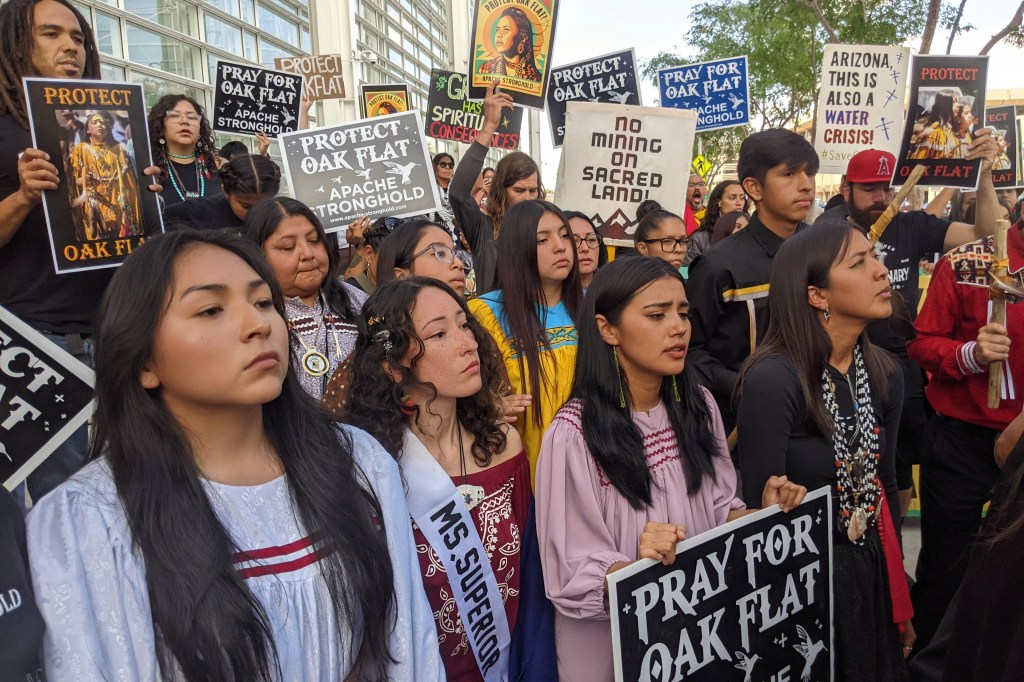KFF Health News – Read More
OAK FLAT, Ariz. — Carrying eagle feathers and chanting prayers, Western Apache runners hit the road on a roughly 80-mile journey this month to try to save their sacred land from being fast-tracked by President Donald Trump into a copper mine. This nationally watched battle, which hinges on religious freedom, awaits the U.S. Supreme Court.
The prayer run aimed to defend a 6-square-mile piece of land in rural Arizona outside of Phoenix called Chi’chil Biłdagoteel, or Oak Flat, where tribes have held ceremonies for centuries. The U.S. Forest Service, which owns the site, plans to trade a portion of it to a foreign-owned mining company, Resolution Copper, in exchange for other environmentally sensitive properties.
The battle over Oak Flat traces back 30 years, when prospectors found a massive copper deposit beneath the ground. The proposed land swap, which Congress approved in 2014 through a defense spending bill, has been stalled by three lawsuits.
But on April 17, the Trump administration pushed the project forward without waiting for the courts. The Forest Service announced it would issue an environmental review as soon as June 16, which would pave the way for the land transfer. Trump issued an executive order to expedite the Resolution Copper mine project, as part of a broader push to open more public lands to drilling and mining.
The copper mine would be the largest in North America, producing up to a quarter of U.S. copper demand, the company projects. But it also would destroy most of Oak Flat, leaving behind a sinkhole nearly 2 miles wide and as deep as the Eiffel Tower.
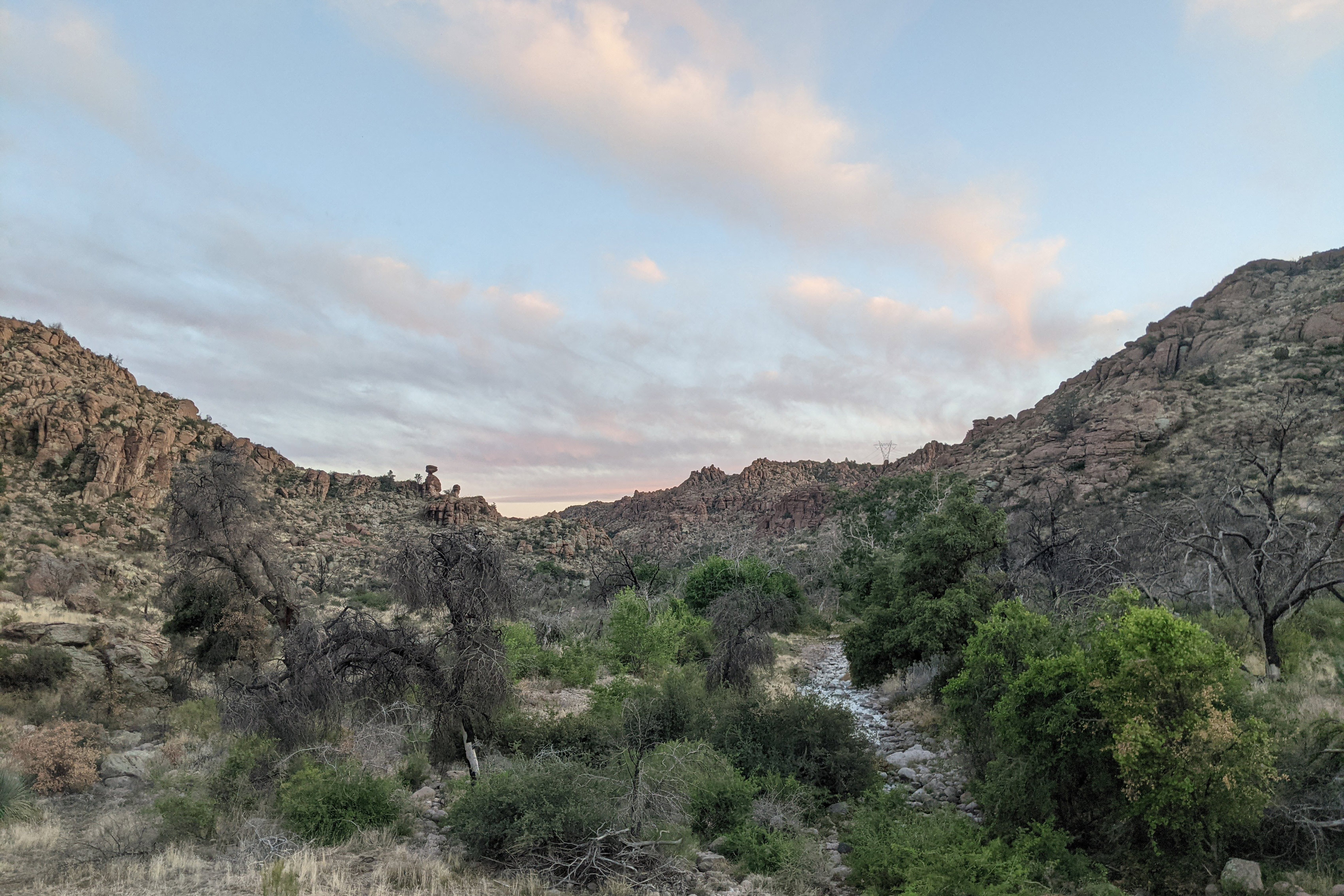
Apache Stronghold, a nonprofit that aims to protect sacred lands including Oak Flat, won a reprieve on May 9, when U.S. District Judge Steven Logan granted an injunction blocking the land swap while the Supreme Court considers its case. The high court is expected to decide whether to take it by early July.
“The federal government and Resolution Copper have put Oak Flat on death row — they are racing to destroy our spiritual lifeblood and erase our religious traditions forever,” Wendsler Nosie Sr., founder of Apache Stronghold, said in a statement. “We are grateful the judge stopped this land grab in its tracks so that the Supreme Court has time to protect Oak Flat from destruction.”
Apache Stronghold’s temporary victory came after the four-day journey from Oak Flat to the federal courthouse in Phoenix ahead of the injunction hearing. The prayer run drew 60 runners, running in segments. Eighty-five faith groups and 44 tribal nations are supporting Apache Stronghold’s Supreme Court appeal.
The fight over Oak Flat offers a glimpse into environmental, public health, and religious battles that may intensify as Trump prioritizes tapping into domestic sources of minerals such as copper, a key ingredient for electronics and renewable energy projects. The case also could set a legal precedent for whether religious freedom grants tribes the right to pray on ancestral lands outside of their reservations.
The Oak Flat case highlights some of the health concerns that arise when ancestral Native American lands owned by the federal government are opened to mining, from physical illness — due to water and air pollution — to psychological, spiritual, and existential distress.
In roadside prayers and rallies along the run, members of various tribes offered visceral accounts of the harm they’ve experienced after sacred lands were tapped for minerals, fossil fuels, and heavy metals. They described attacks on health, identity, religion, and culture that many referred to as ongoing genocide.
At Oak Flat Campground, Apache Stronghold supporters gathered for a ceremony before the prayer run began. Runners were blessed with ashes to protect them on a route that would traverse vast fields of cacti, narrow mountain passes, and even two combative drivers on city streets.
Among those lacing up running shoes was Nizhoni Pike, 24, one of Nosie’s granddaughters. Pike has a deep connection to Oak Flat, where her family holds ceremonies and gathers medicinal plants and food. For Pike, her distress is visceral, immediate.
“This fight means so much,” she said.
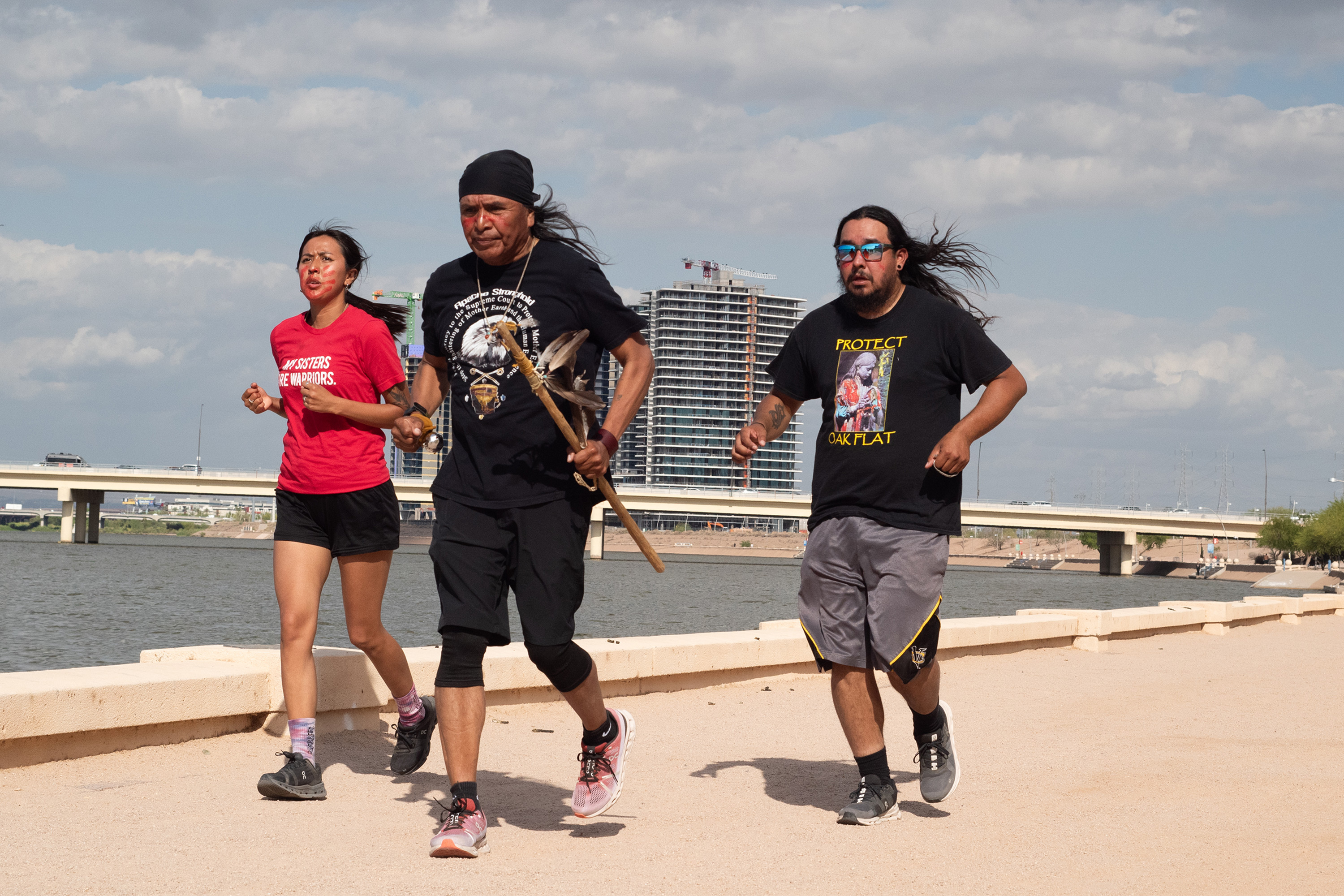
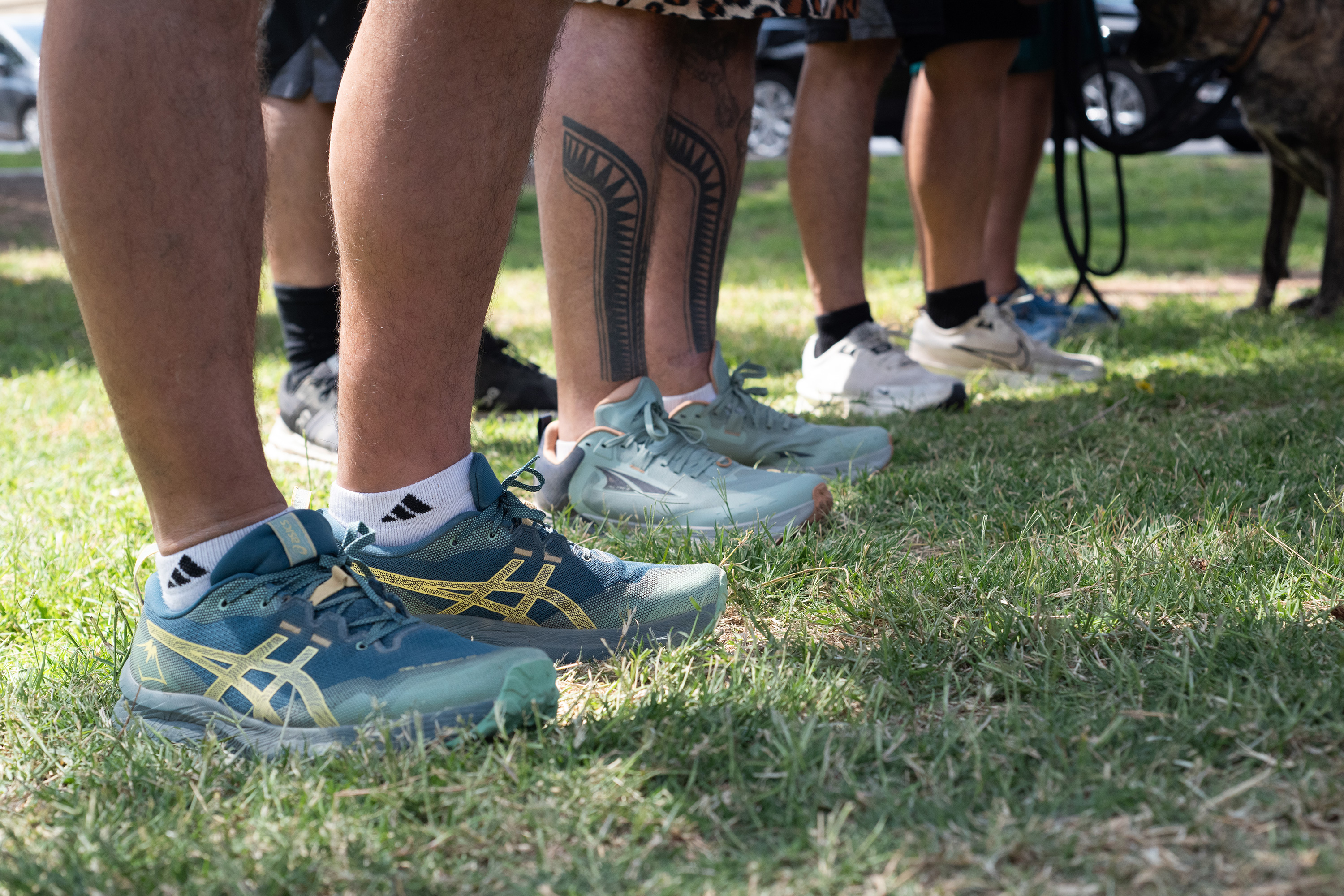

Oak Flat is where Pike had her sunrise ceremony, a coming-of-age ritual, at age 13. During the ceremony, she built her own wickiup, a traditional Apache dome-shaped dwelling made of wood and thatch from the land. Her body was painted with white clay, embodying the White Painted Woman, a revered cultural figure. At the end of a four-day ceremony involving dancing from morning to night, Pike walked to a spring to wash off the clay and return it to the land. Butterflies filled the air, she recalled. Her family named the area Nizhoni’s Butterfly Canyon.
The sunrise ceremony creates a cord by which women are forever connected to the land where they came of age, she said. Tribal elders have told her that women may suffer illness if the cords are cut.
“I’m really worried for me and the other girls that had their sunrise dances there,” she said.
She already had anxiety, she said, and it has grown worse because of the drying up and pending destruction of Oak Flat. Pike said when she returned to her butterfly canyon a few years after her sunrise ceremony, the spring was dry and a dead turtle floated in a nearby pool. She said she has seen large cracks in the earth there and old oak trees starting to die.
“I’ve never felt so much pain in my heart or spirit before,” she said.
She and other Apache members attribute the dryness to Resolution Copper, which has been pumping water out of a 7,000-foot-deep mining shaft on its adjacent property for years.
In a statement, company spokesperson Tyson Nansel denied that extracting water at that depth affects the surface water. He said the company treats the removed water then gives it away to farmers to grow crops so they can “pump less fresh groundwater themselves.” He said the company has made significant changes to its proposed mine to “reduce potential impacts on Tribal, social, and cultural interests.”
Along the run, supporters gathered for blessings from various faith leaders, some of whom sprinkled them with holy water.
They first stopped in the nearby town of Superior, part of the Copper Triangle, which has a long history of mining. The mayor there supports the new mine, which the company has said will create 1,500 jobs during its projected 60-year lifespan. But opponents in Superior warned that mining has left the area with high cancer rates, toxic dumps, and ghost towns.
In the city of Mesa, runners stopped at an ancestral site of the O’odham people to receive support from two Native leaders with roots there.
Su:k Chu:vak Fulwilder, a council member of the Salt River Pima-Maricopa Indian Community, said loss of land and identity is taking a toll on her people. Fulwilder said her tribe suffers from high suicide rates, and her own son took his life in 2022.
“These sacred lands being disturbed — our spirits feel that pain and that anger,” she said.
Other supporters raised concerns about water quantity and quality in a time of long-term drought. Resolution Copper’s plans to conduct block-cave mining would require nearly 250 billion gallons of water and the natural water systems would be “altered forever and, in many cases, destroyed in perpetuity,” according to a federal environmental impact statement and hydrology report.
Henry Muñoz, 69, who worked in mines for nearly 24 years and is now chair of the Concerned Citizens and Retired Miners Coalition in Superior, noted that the mine would require scarce water to pipe away toxic waste and copper concentrate. The toxic slurry would be sent to a tailings site, he said, where it would require more water so that dust laden with arsenic and sulfur doesn’t blow away. He noted that Resolution Copper is owned by foreign mining companies Rio Tinto and BHP, so much of the profit would go overseas.
With cuts to the Environmental Protection Agency and mine and worker safety agencies, Muñoz added, “the company is going to have free rein to do as they please with the environment, and the public won’t have any recourse.”
The prayer run concluded in downtown Phoenix, merging into a march to the courthouse.
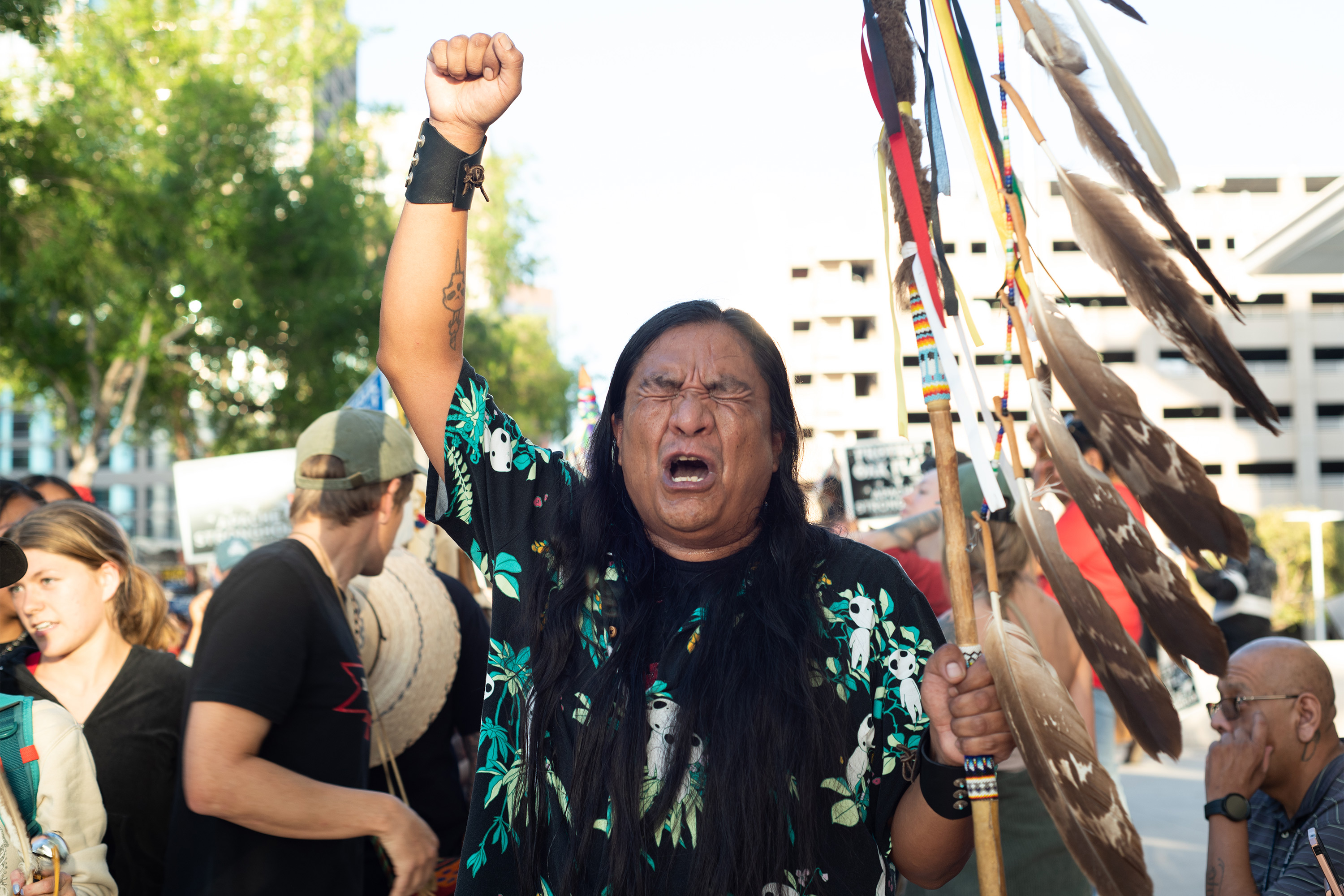
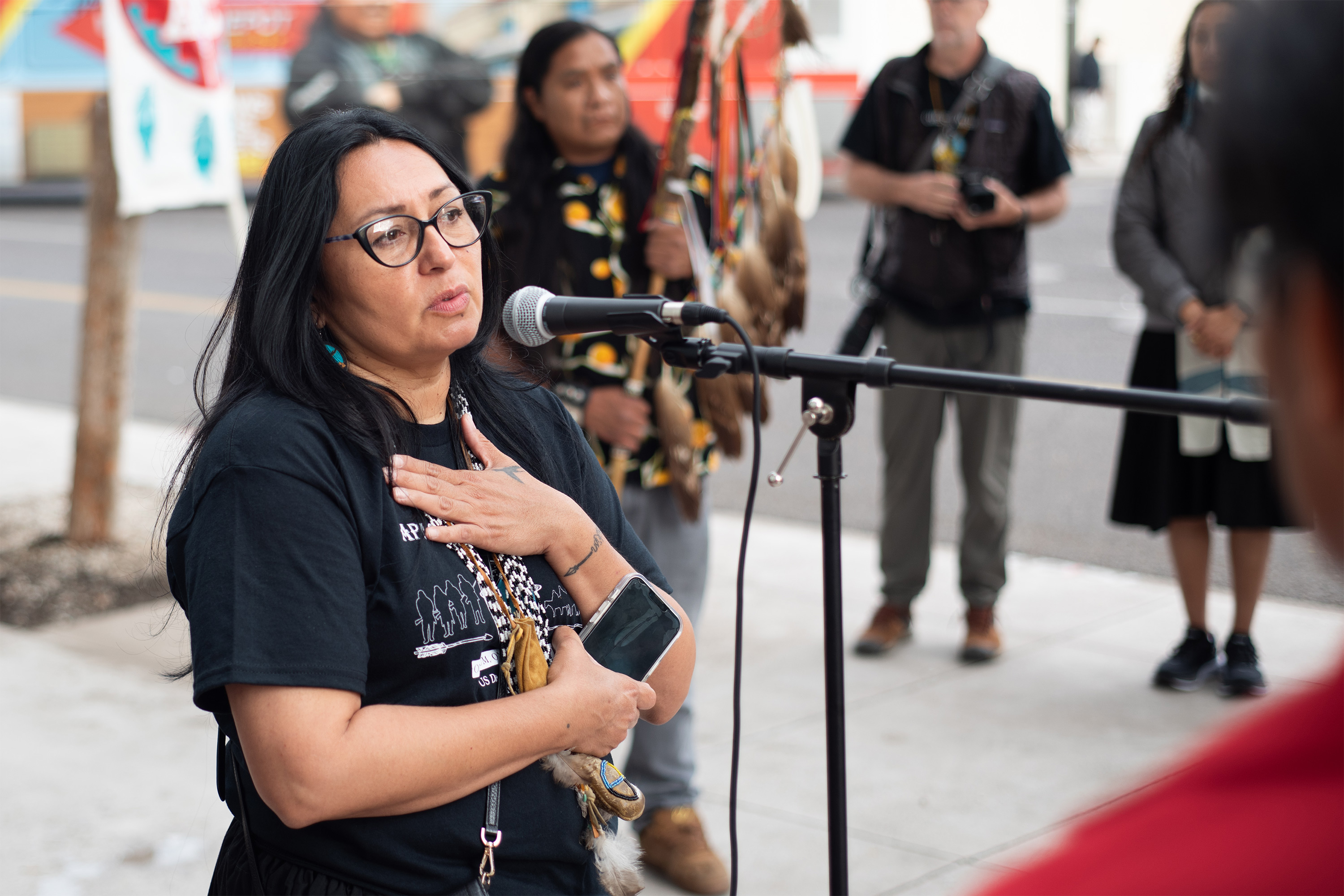
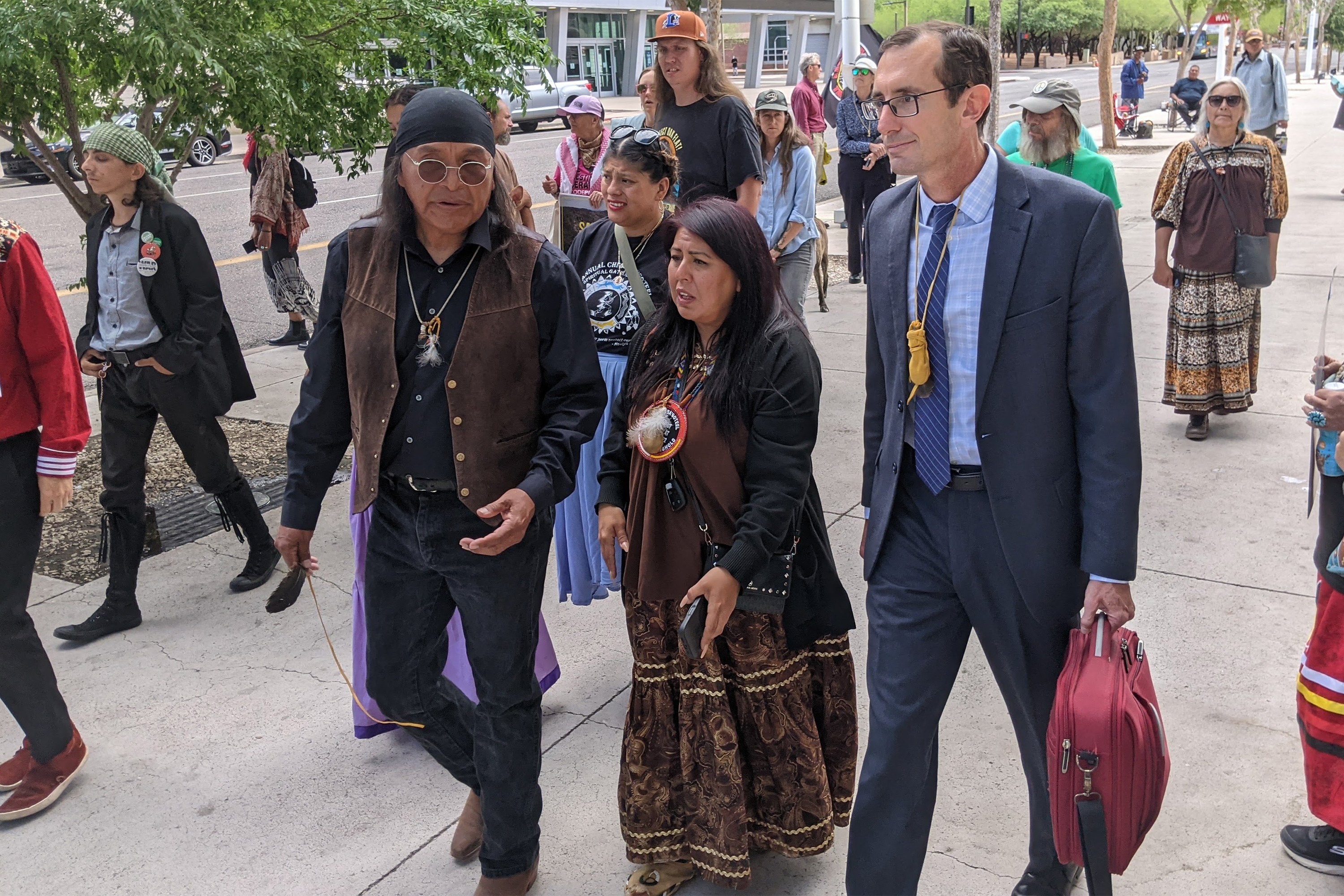
Cadence Hardy, 16, who is Diné, said she grew up in Black Mesa, Arizona, where intensive coal mining depleted an aquifer and its springs, deeply affecting Hopi and Diné communities. Her great-grandfather worked in a coal mine there and got lung disease and cancer, she said.
She said she’s inspired to support Apache Stronghold “to stop what happened to my family from happening to their family.”
In the May 7 federal court hearing, Victoria Peacey, president of Resolution Copper, took the stand, facing a courtroom packed with Apache Stronghold supporters, and testified that it would be at least 16 years until Oak Flat would begin to sink.
Nizhoni Pike later said she felt overwhelmed. Sixteen years is a short time, and the consequence would be huge, she said. “My ancestors’ history could literally be wiped.”
In the courtroom, Pike said, she looked Peacey in the eye.
“Look at me,” Pike recalled thinking. “You are going to destroy me if you destroy Oak Flat.”
If you or someone you know may be experiencing a mental health crisis, contact the 988 Suicide & Crisis Lifeline by dialing or texting “988.”
KFF Health News is a national newsroom that produces in-depth journalism about health issues and is one of the core operating programs at KFF—an independent source of health policy research, polling, and journalism. Learn more about KFF.
USE OUR CONTENT
This story can be republished for free (details).

